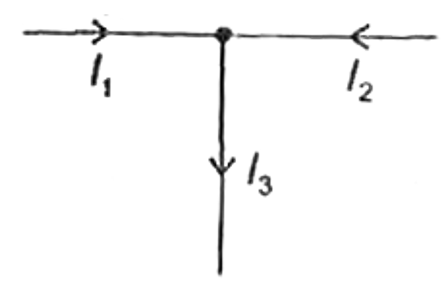Out of given four waves (1),(2),(3) and (4)
.(1)
..(2)
..(3)
.(4)
emitted by four different source ,, and respectively, interference phenomena would be observed in space under appropriate conditions when
Source emits wave (1) and emits wave (2)
Source emits wave (3) and emits wave (4)
Source emits wave (2) and emits wave (4)
emits waves (4) and emits waves (3)
The correct Answer is:C
Step by step video, text & image solution for Out of given four waves (1),(2),(3) and (4) y=asin(kx+omegat) .(1) y=asin(omegat-kx) ..(2) y=acos(kx+omegat) ..(3) y=acos(omegat-kx) .(4) emitted by four different source S_1,S_2,S_3 and S_4 respectively, interference phenomena would be observed in space under appropriate conditions when by Physics experts to help you in doubts & scoring excellent marks in Class 11 exams.
Updated on:21/07/2023Topper's Solved these Questions
- WAVES AND SOUNDBook:ERRORLESS Chapter:WAVES AND SOUNDExercise:Beats
Explore 51 Videos
- WAVES AND SOUNDBook:ERRORLESS Chapter:WAVES AND SOUNDExercise:Stationary Waves
Explore 39 Videos
- WAVES AND SOUNDBook:ERRORLESS Chapter:WAVES AND SOUNDExercise:Progressive Waves
Explore 80 Videos
- VECTORSBook:ERRORLESS Chapter:VECTORSExercise:Exercise
Explore 223 Videos
- WORK , ENERGY , POWER AND COLLISIONBook:ERRORLESS Chapter:WORK , ENERGY , POWER AND COLLISIONExercise:Self Evaluation Test
Explore 19 Videos
Similar Questions
Knowledge Check
Two waves y1=asin(ωt−kx) and y2=acos(ωt−kx) superimpose at a point :
AThe resultant amplitude is √2aBIf l is the intensity of each source then Imax=2lCThe resultant wave leads y1 by a phase angle of π4DData insufficient to arrive at options (B) and ("C")Three waves y1,y2,y3 are given by y1=Asin(Kx−ωt),y2A=sin(Kx+ωt)andy3=Asin(Ky−ωt). Which one of the following represents wave ?
Ay1+y2+y3By1+y3Cy1+y2Dy2+y3Which two of the given transverse waves will give stationary waves then get superimposed?
z1=acos(kx−ωt) .(A)
z2=acos(kx−ωt) .(B)
z3=acos(ky−ωt) .(C )AAandBBAandCCBandCDany two
If the waves of the form y=asin(ωt−kx) nad y=acos(kx−ωt) are superposed, the resultant wave will have amplitude
View SolutionTwo waves are given byy1=asin(ωt−kx) and y2=acos(ωt−kx). The phase difference between the two waves is
View SolutionWhich two of the following waves are in the same phase?
y=Asin(kx−ωt)
y=Asin(kx−ωt+π)
y=Asin(kx−ωt+π/2)
y=Asin(kx−ωt+2π)
View SolutionThe phase difference between the waves y=acos(ωt+kx)andy=asin(ωt+kx+π2) is
View SolutionTwo waves are given by y1=asin(ωt−kx) and y2=acos(ωt−kx). The phase difference between the two waves is -
View Solution
